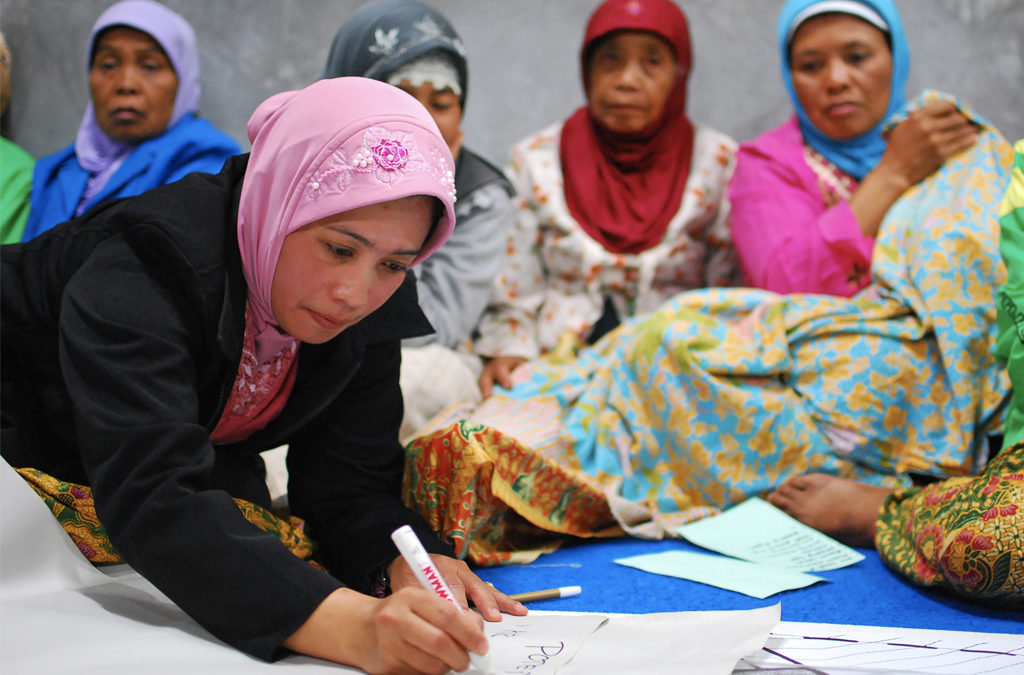What have peacebuilding experts learned from twenty years of counterterrorism? Here are seven reflections.
1. Violent extremism results from fear and frustration paired with the fantasy of a “pure” society.
Since 2001, Muslims have spoken out about the stigma they face related to media stereotypes and prejudices that terrorism is unique to Islam. Violent extremist goals of creating a “pure” society by using violence against other groups is found in many belief traditions. In Burma, violent extremist Buddhist monks used ethnic cleansing in their attempt to “purify” the state. In Europe, the United States, and Canada, white extremists have killed more people than Muslim extremists in their effort to establish a whites-only society. In India, Hindu extremists use violence against Muslims. In Israel, Jewish extremists use violence against Palestinians.
2. Violent extremism is similar to other forms of violence.
Decades of research suggest the motives of individuals who join VE groups are similar to those that drive recruitment into gangs and insurgencies. People join VE groups to gain a sense of belonging, identity, and purpose for a higher cause, and because of the perceived adventure and thrill. They join to escape complicated problems in their lives. And they share a sense of frustration at what they perceive to be corrupt governments and systemic injustices. The United States Institute of Peace program on Violent Extremist Disengagement and Reconciliation asserts the need to “de-exceptionalize” violent extremism.
3. Preventing violent extremism requires a broad peacebuilding approach
Programs that prevent other types of violence will also prevent VE. Peacebuilding and violence prevention require a systems-based, ecological approach to VE that addresses the root causes of violence at the individual, community, and state level. At the individual level, VE prevention requires behavioral health and trauma recovery strategies. At the community level, VE prevention requires designing inclusive programs to meet basic human needs for housing, meaningful work, healthcare, etc. Community dialogue and problem-solving forums empower people to improve their communities. At the state level, participatory governance enables citizens to address shared grievances. Multistakeholder peacebuilding approaches address the diverse challenges that societies face.
4. Education and the “Books not Bombs” strategy is not a simple formula.
In the early years of the Afghan war, peacebuilders touted education and building schools as a key component. USAID funded many schools, but today many of these stand empty as there was no long-term plan for sustainability. U.S. military personnel with bags of cash fueled corruption with short-term projects to build schools in an attempt to buy (or rent) the allegiance of local communities. In some cases, the Taliban targeted schools funded by the military. In other cases, corrupt construction crews ran off with the money and left unfinished schools, or schools were built but there were no funds to hire teachers.
An important lesson is that school building is better done by local communities, using government grants from pooled international funds. The World Bank’s evaluation of the Afghan government’s National Solidarity Program found that it supported an effective strategy for communities using participatory decision-making to determine development priorities and make long-term sustainability plans.
5. We need national mental health approaches to prevent violent extremism.
Violent extremism, like other forms of violence, is a behavioral health challenge. Early childhood trauma contributes to a propensity to join violent extremist groups. A recent study in 2021 found that most right-wing extremists in the U.S. had experienced four or more adverse childhood experiences before they were 18 years old, as compared to only 16 percent of other U.S. Americans. African countries are leading the way in innovating national mental health programs. In Liberia, the Carter Center’s Mental Health Program is supporting a sustainable mental health system to address the crisis following the civil war. They are training a mental health workforce, supporting the passage of a national mental health law, reducing public stigma of behavioral health challenges, and assisting Liberia’s Ministry of Health in implementing the national mental health policy and plan.
6. The future will likely hold more violent extremism.
A cocktail of global crises is likely to increase violent extremism around the world. The climate catastrophe will drive millions of migrants toward other countries. And in many of those countries, thriving atavistic nationalist movements are undermining democratic institutions. Weaponizable technology spreads fear and disinformation to foster recruitment, and mass digital movements fueled by social media are buying into violent extremist worldviews.
7. Counterterrorism distracted us from far greater threats from the climate crisis.
Peacebuilders should continue to reflect on how best to prevent and help people recover from terrorism. But we should recognize that the climate crisis poses far greater dangers to U.S. citizens and all life on the planet. A 2014 U.S. military report clearly stated that climate change is a “threat multiplier” for terrorism.
Where might we be if we had addressed the climate crisis with the 6 trillion dollars the U.S. spent on the Global War on Terror? What if we had harnessed the vast people power of the U.S. military and two decades of policymaking attention on preventing the climate catastrophe rather than going to war in Iraq and Afghanistan?
Lisa Schirch is the Richard G. Starmann, Sr., Visiting Professorship Chair in Peace Studies at the Kroc Institute and Senior Research Fellow at the Toda Institute. She is also a Senior Fellow with the Alliance for Peacebuilding and Visiting Scholar at George Mason University’s School for Conflict Analysis and Resolution. She is the author of ten books, including the edited volume “The Ecology of Violent Extremism: Perspectives in Peacebuilding and Human Security” (Rowman & Littlefield, 2018).





